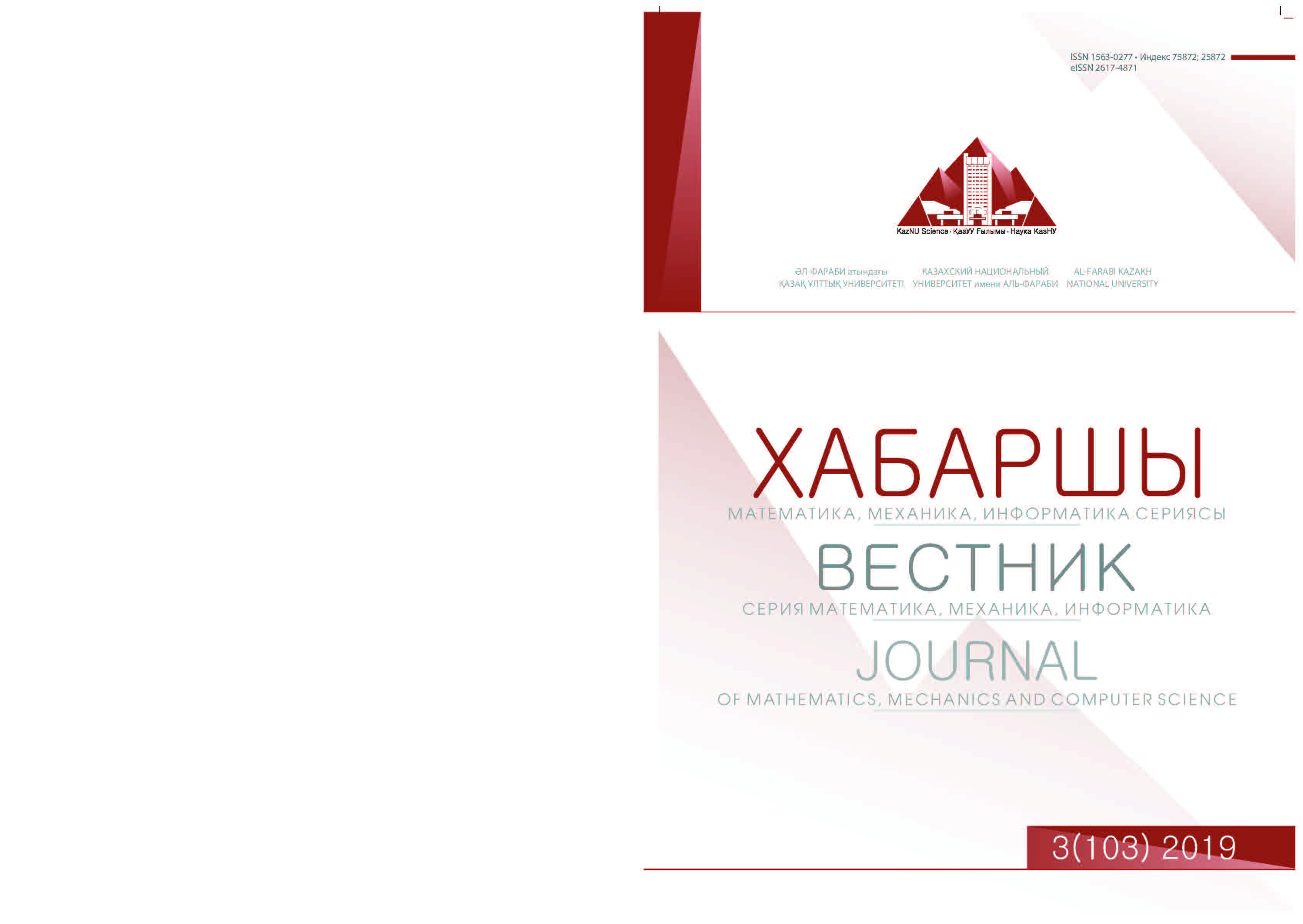Development of a metho d for finding a moisture diffusion co efficient
DOI:
https://doi.org/10.26577/JMMCS-2019-3-29Keywords:
materials, heat and mass, method, numerical calculation, comparisonAbstract
In connection with the advent of new building materials, it b ecomes necessary to determine
the thermophysical characteristics of materials. The aim of the work is to develop metho ds for
solving the inverse problems of non-destructive testing materials. The development of metho ds
and verification of its reliability is scientifically and practically imp ortant. Research metho dologies
are development of a metho d, numerical calculations and comparison of results with exp erimental
data. Systems of nonlinear differential equations with partial derivatives of heat and mass transfer
are considered. The b oundary conditions are set taking into account the physics of the pro cess
as much as p ossible. As an additional condition, the measured values of moisture and heat at
the accessible b oundary of the region are taken. The system under consideration is written in a
dimensionless form. First, an auxiliary task is constructed. Conjugate problem derives from it.
The problem is solved by using iterative metho d. On the basis of system of equations of heat and
moisture transfer it was develop ed an approximate metho d for finding the desired value. A software
pro duct is created and numerical calculations are carried out. The result obtained is compared
with exp erimental data of other scientists.The comparison shows a go o d agreement b etween the
results
References
integration into building performance simulation" , J. Building Eng. 3(2015): 1-15.
[2] Mendes N., Chhay M., Berger J., and Dutykh D., "Numerical methods for diffusion phenomena in building physics" ,
PUCPRess, Curitiba, Parana 1(2017).
[3] Desta T. Z., Langmans J., and Roels S., "Experimental data set for validation of heat, air and moisture transport models
of building envelopes" , Building and Environment vol. 46, no 5 (2011): 1038-1046.
[4] Kalamees T. and Kurnitski J., "Moisture Convection Performance of External Walls and Roofs" , Journal of Building
Physics vol. 33, no 3 (2010): 225Џ247.
[5] Whitaker S., "Flow in porous media II: The governing equations for immiscible, two-phase flow" , Transport in Porous
Media vol. 1, no 2 (1986): 105Џ125.
[6] Luikov A. V., "Heat and mass transfer in capillary-porous bodies" , Pergamon Press, New York (1966)
[7] Dos Santos G. H., Mendes N., "Heat, air and moisture transfer through hollow porous blocks" , Int. J. Heat Mass Transfer
vol. 52, (2009): 2390-2398.
[8] Driscoll T. A., Hale N., and Trefethen L. N. "Chebfun Guide" Pafnuty Publications, Oxford (2014).
[9] Mnasri F., Abahri K., El G., Bennacer R., and Gabsi S., "Numerical analysis of heat, air, and moisture transfers in a
wooden building material" , Thermal Science vol. 21, 2(2017): 785Џ795.
[10] Vololonirina O., Coutand M., and Perrin B., "Characterization of hygrothermal properties of wood-based products Impact of moisture content and temperature" , Construction and Building Materials vol. 63, (2014): 223Џ233.
[11] Taylor P.J., "The stability of the Du Fort-Frankel method for the diffusion equation with boundary conditions involving
space derivatives" , The Computer Journal vol. 13, no 1 (1970): 92Џ97.
[12] Maksimov A.M., Cipkin G.G., "Water-ice phase transitions in unsaturated soils" , Preprint IPM Academy of Sciences of
the USSR no 382 (1989): 44.
[13] Mordovskyi S.D., Pavlov B.N., "Mathematical models of freezing-thawing of frozen soil" , Science and Education, Yakutsk
vol. 3, (1996): 52-56.
[14] Ershov E.D., Pavlov B.N., "Mathematical models of freezing-thawing of frozen soil" , General geocryology, MSU publ.
(2001): 688.
[15] Bektemesov M. A., Rysbaiuly B., "An iterative method for calculating the thermal conductivity of soil freezing" , Journal
of International Scientific Publications Materials, Methods and Technologies vol. 6, (2012): 13-20.
[16] Berger J., Dutykh D., Mendes N., Rysbaiuly B., "A new model for simulating heat, air and moisture transport in porous
building materials" , International Journal of Heat and Mass Transfer vol. 134, (2019): 1041-1060.
[17] Kabanikhin S. I., "Inverse and Ill-Posed Problems. Theory and Applications" , De Gruyter, Germany (2011): 459.




